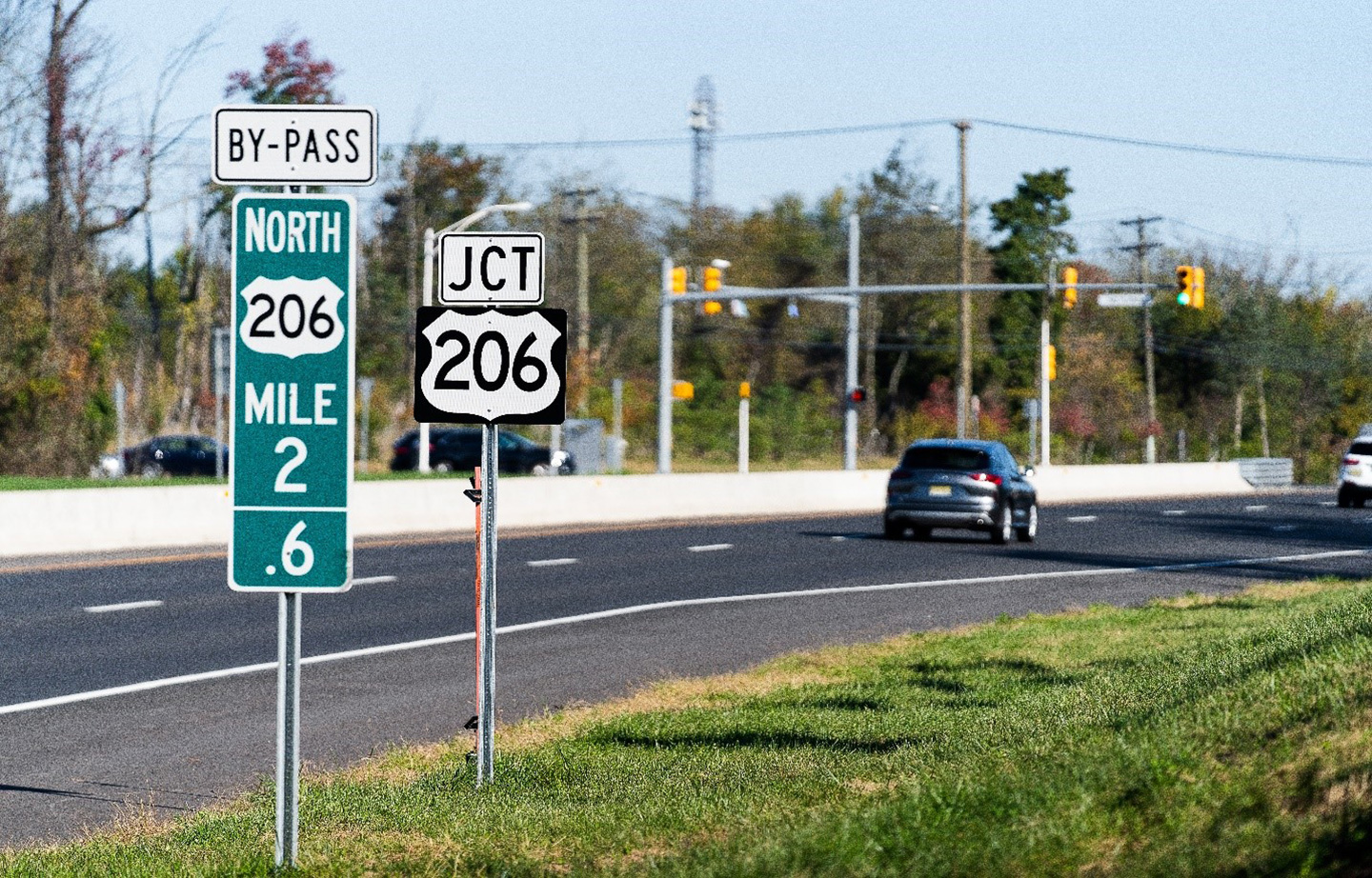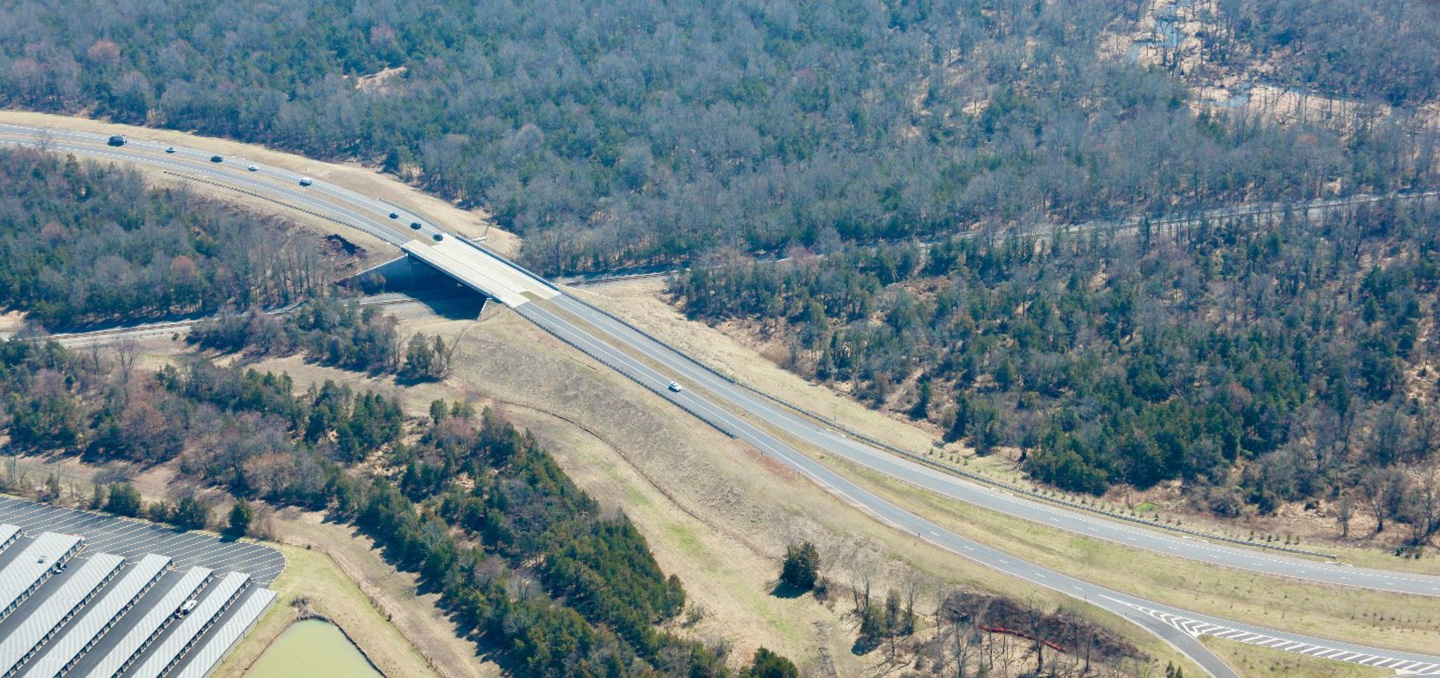The Route 206 Bypass Contract B project in Hillsborough, New Jersey, is now complete. The three-mile, $130 million bypass was conceived to reduce the chronic weekday and weekend congestion on this major north-south state highway and improve safety. The
bypass will provide convenient access to a planned future rail station, making the town even more attractive for transit commuters.
The opening of the bypass has provided an opportunity for Hillsborough Township to pursue its vision of developing a pedestrian-friendly town center."
David Hill

Reducing Chronic Congestion
The Route 206 Bypass, also known as the Peter J. Biondi Bypass, is a unique project with several challenges as it provides an alternative route for the regional traffic to avoid congested portions of the existing New Jersey Route 206. The bypass alignment
crosses over the former Delaware and Bound Brook (Reading) Railroad Historic District at two locations. The aesthetic for both bridges and approach retaining walls were intended to blend with the historical aspects of the area. These two railroad
crossings provided technical challenges as the Contract A bridge had a 230-foot single span and the Contract B bridge had a 176-foot single span with multiple field splices adding additional complications for both erections.
A further challenge included a 61-degree skew in the Contract A bridge. We met with steel fabricators early in the design phase allowing the team to better understand best practices regarding fabrication and construction of skewed bridges. Extensive coordination
with the CSX engineers resulted in successful erection of the bridges while minimizing any impacts to the train operations.
We also worked with CenturyLink®, the owner of the underground and overhead telephone lines along Route 206. This included complex and time-consuming relocation of 4,000 feet of impacted aerial fiber using approved subcontractors to avoid delays during
construction. Other major utility challenges were the relocation of 700 feet of New Jersey American Water’s 30-inch water main distribution line, along with more than 1800 feet of sanitary sewer pipe system relocation constructed in stages to
avoid any loss of service to customers.

Photo courtesy of Roger Swingle Photography.
Creating a Common Vision
Public engagement throughout the planning, design, and construction phases was essential to the success of the project. We worked with our client, New Jersey Department of Transportation (NJDOT), to utilize collaborative and consensus-building strategies
to create a common vision for the Route 206 Bypass that was supported by the local communities, environmental agencies, utility entities, and other project stakeholders. These strategies included holding a “design partnering” session with
key project stakeholders at the beginning of the design process to hear stakeholder viewpoints and to understand expectations.
With the completion of the Route 206 Bypass, congestion on existing Route 206 in the Hillsborough Township central business district has decreased with regional traffic being diverted from the center of town.
During the ribbon-cutting ceremony, Mayor Shawn Lipani stated, “This long-awaited and anticipated vision is now a reality. We have looked forward to this day and now can look forward to the development of our downtown Hillsborough main street vision.”
In May, we accepted the Honor Award for the Route 206 Bypass Contract B project in the large project category from the American Council of Engineering Companies’ New Jersey (ACEC NJ) chapter and the ACEC National Recognition Award. The project has
also received other awards, including the NJ Alliance for Action’s Distinguished Engineering Award for 2022.